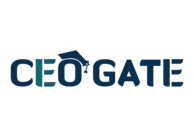Description
This module offers opportunity for senior-level managers to acquire export insights, explore leadership and people management concepts and examine actionable strategies for building the kind of leadership and people management to enable employees to deliver their optimum performance, this module also aims to provide students with the ideas, frameworks and tools required increasing an environment and culture in which individuals feel compelled to innovate and contribute to a transforming work environment.
Objectives
Incorporate the characteristics of good leadership into corporate projects and routine work.
Explain why different types of leadership styles impacts on a company’s culture.
Map out the qualities, characteristics and behaviours of an effective leader and choose one that will work with a particular organisation leadership style.
Demonstrate their knowledge and understanding of the subject matter though group discussions and written assignments.
Outlines
-Definition and Significance of Leadership
Definition of Leadership
Key Elements of Leadership
Why Do We Need Leaders?
Obstacles to Effective Leadership
Leadership and Management
-The Global and Cultural Contexts
Defining Elements of Culture
Hall’s Cultural Context
Individualism—Collectivism
GLOBE Country Clusters
GLOBE Cultural Leadership Profiles
Suggested Causes for Gender Inequality in Organizations
-The Foundations of Modern Leadership
Eras of Modern Leadership
The Trait Era—Assumptions and Findings
The Behavior Era—Assumptions and Findings
Fiedler’s Contingency Model
Task and Relationship—Motivated Leaders
Practical Implications of Fiedler’s Contingency Model
Contingency Factors in the Normative Decision Model
Path-Goal Theory
-Individual Differences and Traits
Individual Differences Framework
Demographic Characteristics
Abilities and Skills
Skills and Career Progression
How Traits Play a Role in Leadership
Proactive Personality
The Dark Triad
-Power
Definitions
Impact of Power on Power Holder
Culture and Power
Potential Reactions to Individual Sources of Power
Career Stages and Power
-Current Era in Leadership: Inspiration and Connection to Followers
Benefits of the New Era Approaches
Requirements of Charismatic Leadership
Elements of the Charismatic Situations: External Factors
-Leading Teams
Continuum of Participation
Benefits of Participation
Benefits of Delegation
Elements of Self-Leadership
Structural Factors in Building Effective Teams
Role of Team Leaders
-Developing Leaders
Definitions
Types of Development
Factors in Learning
Curriculum
- 7 Sections
- 23 Lessons
- 20 Hours
Expand all sectionsCollapse all sections
- Lecture 14
- Lecture 23
- Lecture 33
- Lecture 43
- Lecture 52
- Lecture 65
- Lecture 73
- Executive Leader and Management Consultant with 11+ years of part-time lecturing and consultancy experience, specializing in strategic management and Human Resources.
- Comprehensive Academic and Security Background holds a terminal degree (DBA) in Human Resources Management, an MBA in Strategic Management, a diploma in Crisis Management, and degrees in Law and Police Science.
- Prestigious Academic and Government Roles former Colonel Doctor (Professor of Management) and extensive lecturer/consultant at major national/international universities, the Central Bank's Banking Institute, and the National Training Academy.
- High-Level Consultation Expertise specializes in HR Management, Organizational Restructuring, Process Reengineering, Strategic Planning, Change Management, and Crisis Management.
- Curriculum and Program Focus specialized in leading HR and education programs, and designing methodologies for international training centers.








